I bought on Ebay a 1993 workstation from a manufacturer
- you might not think about immediately regarding classical workstations
- that still exists today
The manufacturer is Intergraph, a company that started in 1969 on engineering for government agencies. It became one of the leading CAD/CAM suppliers in the 1990s, and stopped making hardware in 2000. Today, Intergraph is a 4000 people company working in the Geographical Information Systems area.
The workstation, a “2700 Series” model, is interesting mainly from a CPU point of view. It uses the last model of the “Clipper” family of CPUs (and not an ordinary PC processor, SPARC, MIPS, PA-RISC, or POWER chip, these are for common people :-).
The following paragraphs contain mainly passages from the [Wikipedia entry]. Clipper CPUs started their live when Fairchild decided to develop a 32-bit RISC CPU that was available from 1986. The first model was called C100. In 1987 Schlumberger, who owned Fairchild from 1979 on, sold Fairchild to National Semiconductor in 1987. They also sold the Clipper technology to the biggest customer of this technology, Intergraph. National Semiconductor would probably not be interested in Clipper, anyway, because they had their own 32-bit CPU the NS320xx family (in fact, it was the first 32-bit general-purpose microprocessor). It was developed earlier, and it was not RISC (but it was also not commcercially successful even if the list of computers incorporating this CPU is impressively large).
So in 1988 Intergraph developed a new model of the Clipper family, the C300. In 1990, finally, the last model of the family, the C400 was released. It was the first processor to integrate both architectural techniques, superscalar and superpipelined operations. Superscalar instruction dispatch means executing more than one operation at a time. Superpipelined operation means that some of the stages of a pipeline are broken up into smaller sub-stages in order to increase the performance. As a consequence, in 1990 the C400 with its 33 MIPs and 9 MFLOPs compared favourably to its competitors, e.g. early SPARC or POWER processors.
The Clipper architecture used a simplified instruction set compared to earlier CISC architectures, but it did incorporate some more complicated instructions than were present in other contemporary RISC processors. These instructions were implemented in a so-called Macro Instruction ROM within the Clipper CPU. This scheme allowed the Clipper to have somewhat higher code density than other RISC CPUs.
Unlike many other microprocessors, the Clipper processors were sets of several distinct chips. The C400 consists of four basic units: an integer CPU, an FPU, an MMU, and a cache unit, but the MMU and cache unit were combined into one CAMMU chip. Therefore, the C400 consists of 3 separate chips. Funnily, the largest chip is the CAMMU.
The strength of Intergraph (short for Interactive Graphics) computers was always graphics. Not so much the 3D graphics for VR and animated movies, but the 2D and 3D graphics for CAD/CAM-like applications. Therefore, also their workstations came with good graphics capabilities. My workstation even has a 2-display graphics card where everythings seems to exist twice: 2 x 2 MB Video RAM, 2 RAMDACS (yes, this was the time when RAMDACs were separate chips).
Intergraph workstations came for a long time in one of three combinations and names:
- InterPro: desktop form factor plus separate display
- InterAct: tower form factor plus two displays integrated into a digitalisation desk

- InterView: tower form factor for a nearby digitalisation desk
According to my favorite market resource, at least in Germany, 3 different models of the 2730 desktop workstation were sold:
- InterPro 2730-112: Single 19″ display
- InterPro 2730-122: Double display
- InterPro 2730-352: Single 21″ display
So, what model do I probably have? Well, after reviewing the above models and knowing the configuration of my workstation (32 MB RAM, 426 MB HDD, double display card), it is probably a InterPro 2730-122, and a not upgraded one.
You have probably noticed that I do not have pictures from a running workstation. That is, because I do not have a monitor yet. One would hope that any 13W3 display could do, but probably I am way to optimistic about that.
Like Sun’s, also Intergraph had a Forth-based diagnostics tool accessible at the firmware level. As I am a big fan of Forth, I am curious to see what one can do with this one.
According to [Wikipedia], “Fairchild promoted the CLIX operating system, a version of UNIX System V, for use with the Clipper. Intergraph adopted CLIX for its Clipper-based systems and continued to develop it; this was the only operating system available for those systems.” Later on, Intergraph ported Windows NT to Clipper computers, and even demonstrated such systems. However, Intergraph cancelled this project before its release. However, there is a 3.5″ floppy disk in my disk drive and it’s labelled “NT 3.5.1 21/21”. I’m very curious what this means. As soon as I get a monitor, I will tell you…
The last Clipper-based computer was the 2830 model which (I assume) is a 2730 with a 50 MHz (instead of a 40 MHz) C400. In 1995, Intergraph gave up this line of computers and sold exclusively x86 systems with Windows NT or Solaris.
The outer design of the workstation is quite standard and boring:


However, the build quality and the industrial design of the machine is really good. If we remove the heavy gauge steel cover by removing three screws we see a nicely laid out interior:

The right third is the PSU- The PCB on the bottom is the graphics card. Here is it in more detail:
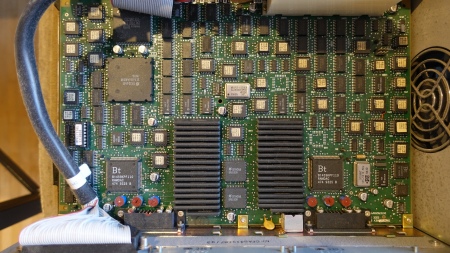
The top part of the interior is a cage with the HDD and the FDD. It is so well designed that you can swivel the entire cage up after removing a thumb screw:

And underneath you find the SIMM slots to the left and the CPU on the right:
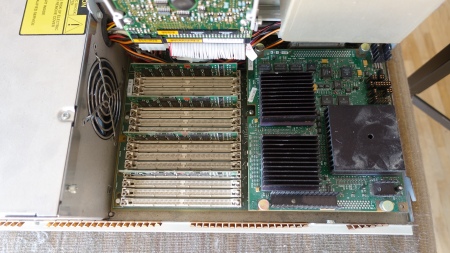
Four slots filled with 8 MB of RAM each, and another 12 slots empty. The chip with the big heat spreader (the one with the hole) is the CAMMU, the other two are CPU and FPU. If you want to see how the chips look like underneath: la voila!
Technical Data
Manufacturer: Intergraph
Model: 2700 Series
Introduced in: 1993
Initial price: ???
CPU: Intergraph Clipper C4 (a.k.a. C400) @40 MHz
RAM: 32 MB (128 MB max)
HDD: 426 MB (externally max: 9.4 GB)
FDD: 3.5″, 1.44 MB
Graphics: “GT+ Graphics”
Colors: 256
OS: CLIX
Interfaces: RS232, parallel, Ethernet, SCSI, keyboard, mouse, plotter, screen (13W3)
References
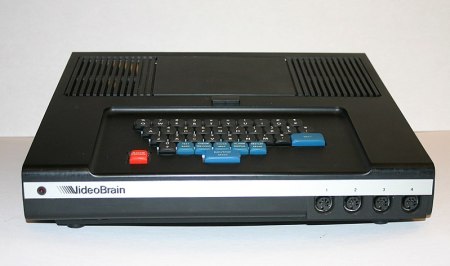
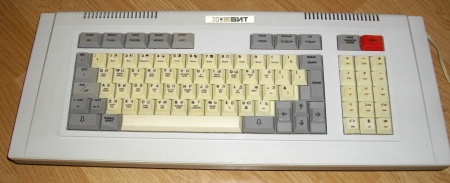
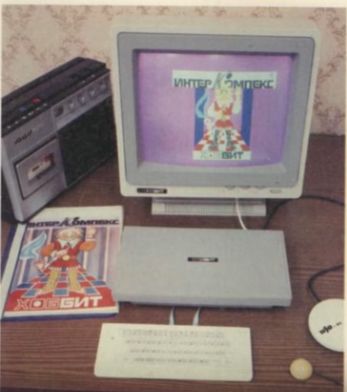


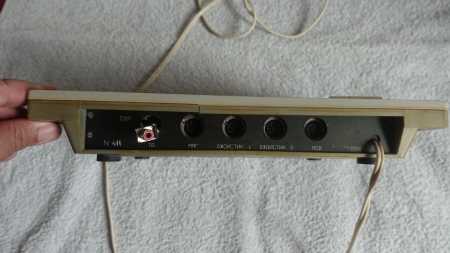
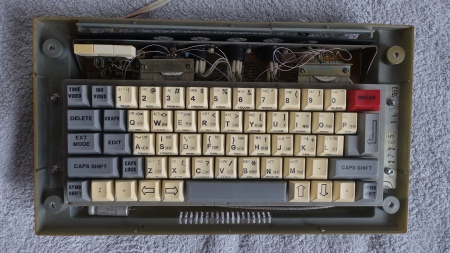
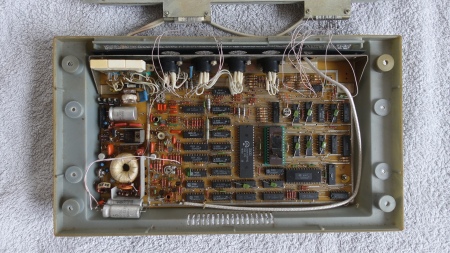

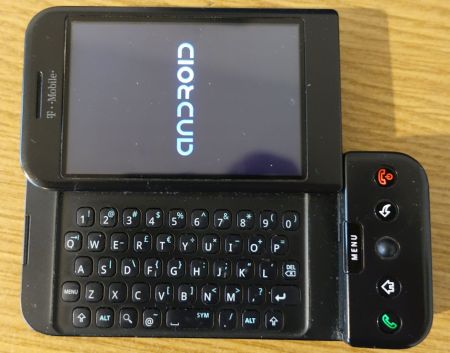








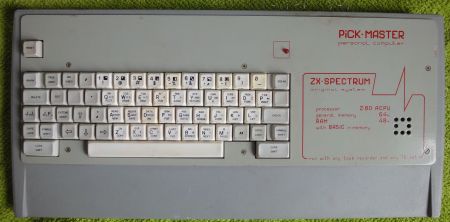
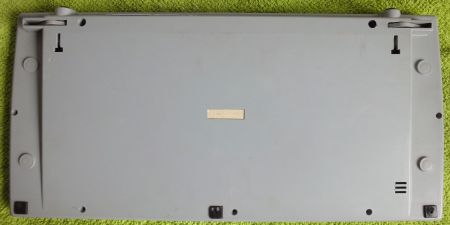




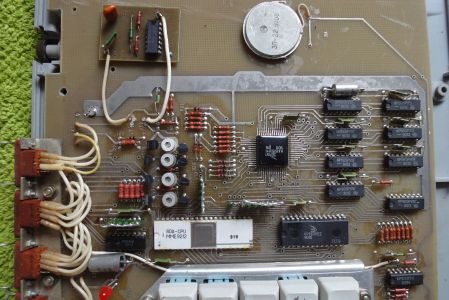
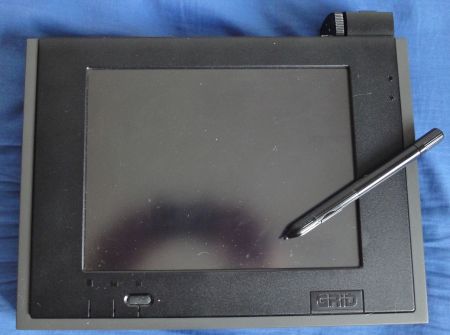
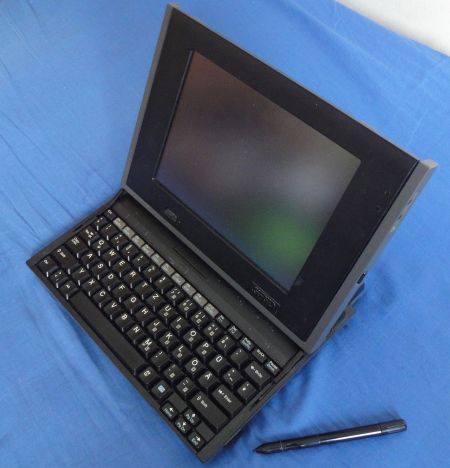

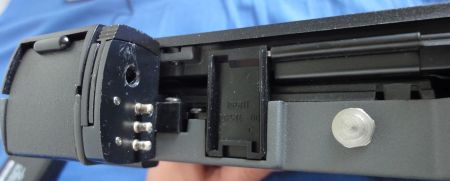

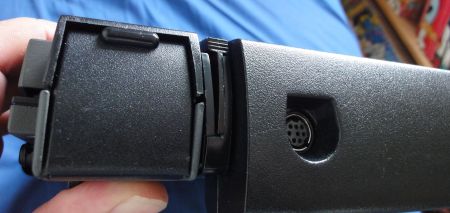
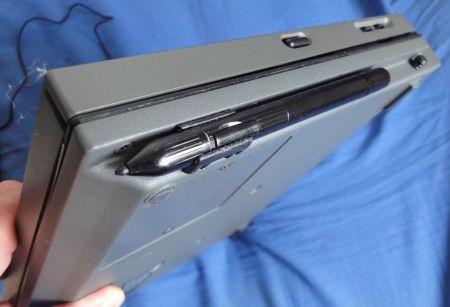
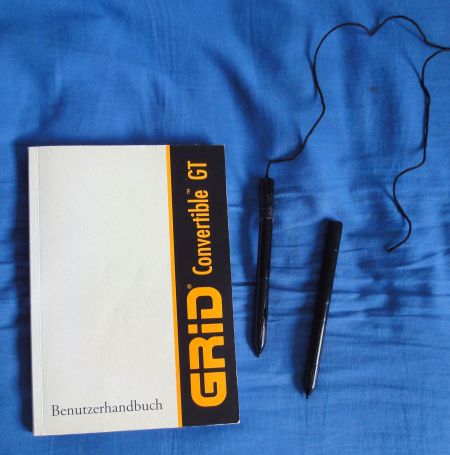
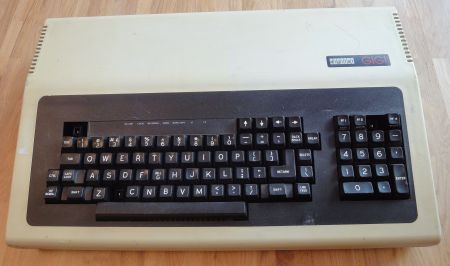 The Digital Equipment VK100 or „GIGI“ (General Imaging Generator and Interpreter) seems to be one of DECs approaches of creating an “intelligent” graphics terminal that is capable of processing complex graphic commands. It is not only the device for which the ReGIS system was developed, it even contained a Basic interpreter whose programs could be loaded, saved, and executed via the serial connection from the host computer. It used 8-color bitmap graphics and was based on the Intel 8085 processor. It offered a VT-52 and (some sort of) a VT-100 mode. It connected to an external Barco GD33 RGB monitor.
The Digital Equipment VK100 or „GIGI“ (General Imaging Generator and Interpreter) seems to be one of DECs approaches of creating an “intelligent” graphics terminal that is capable of processing complex graphic commands. It is not only the device for which the ReGIS system was developed, it even contained a Basic interpreter whose programs could be loaded, saved, and executed via the serial connection from the host computer. It used 8-color bitmap graphics and was based on the Intel 8085 processor. It offered a VT-52 and (some sort of) a VT-100 mode. It connected to an external Barco GD33 RGB monitor.